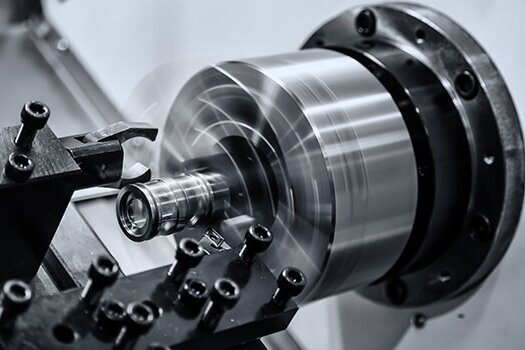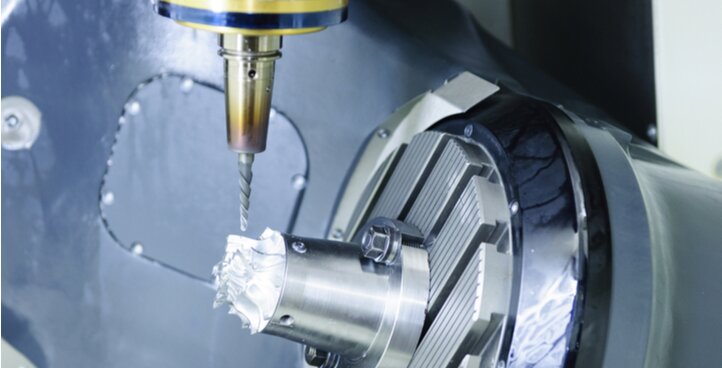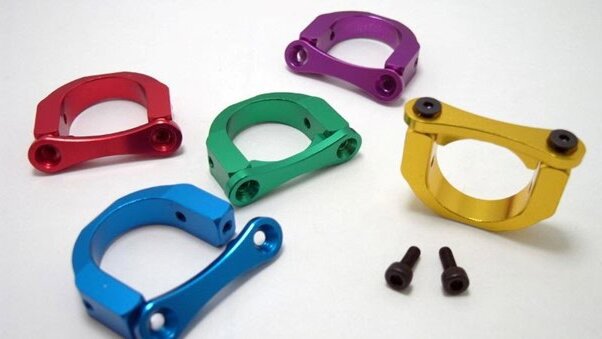Stainless steel is known for its durability, but achieving that perfect finish can be tricky. You may have tried sanding before and had scratches or uneven surfaces. Don’t worry, we’ve all been there. You need the right approach and tools to make the process smoother and get the desired results. Let’s break down how to effectively sand stainless steel, ensuring a sleek finish every time.
Sanding stainless steel requires the right tools and techniques. Start with coarse-grit sandpaper and gradually move to finer grits. Always sand in one direction, following the grain of the metal. Use a sanding block for flat surfaces, and consider a power sander for larger projects.
Ready to transform your stainless steel surface? Let’s explore the step-by-step process to achieve a flawless finish that will make your project shine.

Preparing to Sand Stainless Steel
Safety first: Protective gear and precautions
Always prioritize safety when sanding stainless steel. Wear safety goggles to protect your eyes from metal particles. Use a dust mask to avoid inhaling fine metal dust. Wear gloves to protect your hands from sharp edges and abrasive materials.
Ensure proper ventilation in your workspace. Open windows or use fans to circulate air and reduce dust buildup. If working outdoors, choose a calm day to prevent wind from blowing debris around.
Setting up your workspace
Choose a well-lit area for your project. Secure your stainless steel piece to prevent movement during sanding. Use clamps or a vise for smaller items. For larger pieces, work on a stable surface or workbench.
Cover nearby surfaces to protect them from metal dust. Lay down drop cloths or plastic sheeting. Keep a vacuum cleaner handy for quick cleanups.
Tools and Materials Needed for Sanding Stainless Steel
Types of sanders: Hand vs. power sanders
Hand sanders offer precision and control for small projects or detailed work. They’re ideal for tight spaces and curved surfaces. Options include sanding blocks, sanding sponges, and hand pads.
Power sanders speed up the process for larger projects. Orbital sanders work well for flat surfaces. Belt sanders are great for removing large amounts of material quickly. For intricate work, consider a detail sander.
Sandpaper grit selection guide
Start with coarse-grit sandpaper (60-80 grit) to remove scratches or imperfections. Progress to medium-grit (120-220) for smoothing. Finish with fine grit (320-400) for a polished look.
For mirror finishes, use extra-fine grits (600-2000). Remember to change the sandpaper often as it wears down. Dull sandpaper is less effective and can damage the surface.
Other essential tools and materials
Keep mineral spirits or denatured alcohol on hand for cleaning. Use a tack cloth to remove dust between the sanding stages. Consider a polishing compound for the final finish.
A straight edge or level helps check for flatness. Masking tape protects areas you don’t want to sand. Have a bright light source to inspect your work as you progress.
How to Sand Stainless Steel?
Step-by-Step Guide to Hand Sanding Stainless Steel
- Start by securing the stainless steel piece to a stable surface.
- Begin with coarse grit sandpaper, sanding in the direction of the grain.
- Apply even pressure as you move across the surface, covering all areas.
- Switch to a finer grit and repeat the process until you achieve the desired smoothness.
- Wipe down the surface between grit changes to remove debris.
How to Use a Power Sander on Stainless Steel?
- Choose the appropriate power sander for your project.
- Attach the coarse grit sandpaper and begin sanding, following the grain.
- Use light to moderate pressure to avoid gouging the metal.
- Gradually switch to finer grits, just like with hand sanding.
- Finish by polishing the surface to bring out a shine.
Techniques for Achieving a Smooth Finish
Consistency is key. Make sure to sand evenly across the entire surface. Overlap your sanding strokes to avoid missing any spots. When moving to a finer grit, take your time to smooth out any remaining imperfections. Polishing is the final step that will bring out the true beauty of stainless steel.
Wet Sanding vs. Dry Sanding: Pros and Cons
- Wet Sanding: Helps reduce heat and friction, minimizing the risk of overheating and warping the metal. It also produces a smoother finish and reduces dust. However, it can be messier and requires proper cleanup to prevent rusting.
- Dry Sanding: Easier to set up and clean without water. It’s faster for quick jobs and touch-ups. However, it generates more dust and may create more heat, so you must be cautious with the pressure you apply.

Surface Preparation of Sanding Stainless Steel
Cleaning the surface before sanding
Start with a clean surface for best results. Remove dirt, grease, and oils using a degreaser or mild soap solution. Rinse thoroughly with clean water and dry completely.
For stubborn stains, use a stainless steel cleaner. Avoid harsh chemicals that might damage the metal. A clean surface ensures even sanding and prevents contaminants from scratching.
Identifying areas that need more attention
Inspect the stainless steel surface under good lighting. Look for deep scratches, dents, or discoloration. Mark problem areas with masking tape or a washable marker.
Feel the surface with your hand to detect subtle imperfections. These areas may require extra sanding or starting with a coarser grit. Address these issues first before moving on to general sanding.
Common Sanding Stainless Steel Patterns
Linear sanding
Linear sanding follows the grain of the metal. Move the sandpaper in long, even strokes in one direction. This technique works well for large, flat surfaces and helps achieve a uniform finish.
Apply consistent pressure throughout each stroke. Overlap each pass slightly to ensure complete coverage. Linear sanding is ideal for maintaining the natural look of brushed stainless steel.
Circular sanding
Circular sanding uses small, overlapping circular motions. This technique is effective for removing stubborn scratches or marks. It’s also helpful in blending different areas of the surface.
Start with light pressure and increase gradually as needed. Be careful not to create swirl marks, especially when using power sanders. Circular sanding can achieve a more polished look.
Crosshatch sanding
Crosshatch sanding combines linear strokes in perpendicular directions. Sand is in one direction, and then sand is perpendicular to the first direction. This method helps create a more uniform surface texture.
Crosshatch sanding is particularly useful for removing deep scratches or preparing a surface for painting. It ensures thorough coverage and can reveal any missed spots.
Handling Curved Surfaces and Edges
Techniques for sanding rounded edges
Use flexible sanding pads or sponges for curved surfaces. These conform to the shape of the edge, ensuring even contact. Wrap sandpaper around a soft backing, like a foam block, for more control.
Move the sandpaper along the curve, following its natural contour. Maintain consistent pressure to avoid creating flat spots. For very tight curves, consider using sanding cords or specialized contour sanders.
Tips for getting into tight spaces
Fold sandpaper into minor points to reach corners and crevices. Use detail sanders or sanding mouse tools for intricate areas. Sanding sticks or emery boards can help narrow gaps.
Try wrapping sandpaper around a thin, rigid object like a popsicle stick or an old credit card for tight spaces. Always sand carefully in confined areas to avoid damaging adjacent surfaces.

Sanding Stainless Steel: Avoiding Common Mistakes
Over-sanding: How to avoid it
Check your progress frequently to prevent over-sanding. Use light pressure and let the sandpaper do the work. Stop sanding once you’ve achieved the desired finish.
Set a timer or count your strokes to maintain consistency. Remember, you can always sand more but can’t undo over-sanding. Take breaks to assess your work with fresh eyes.
Dealing with sanding marks and scratches
Sand in the same direction to minimize visible marks. Gradually progress to finer grits to remove scratches from coarser grits. Make sure to complete it. Don’t grit levels, as this can leave noticeable scratches.
For stubborn marks, try standing at a slight angle. Use a sanding block for more even pressure distribution. If deep scratches persist, consider starting over with a coarser grit.
Finishing Touches
Post-sanding cleaning techniques
Remove all dust and debris after sanding. Use compressed air or a vacuum with a soft brush attachment. Wipe the surface with a tack cloth to pick up fine particles.
For a deep clean, use mineral spirits or denatured alcohol. Apply with a lint-free cloth and wipe in one direction. Allow the surface to dry completely before applying any finishes.
Applying finishes to protect the surface
Consider applying a clear coat or sealant to protect your work. Choose a product specifically designed for stainless steel. Follow the manufacturer’s instructions for the best results.
For outdoor items, look for UV-resistant finishes. Apply thin, even coats using a high-quality brush or sprayer. Allow each coat to dry thoroughly before adding another.
Sanding Stainless Steel: Maintaining Your Tools
Cleaning and storage tips for sanders and other tools
Clean your tools after each use to prolong their life. Remove dust from power sanders using compressed air. Wipe down hand tools with a clean, dry cloth.
Store tools in a dry place to prevent rust. Keep power cords neatly coiled to avoid damage. Hang hand sanders or store them flat to prevent the warping of the sanding surface.
When to replace sandpaper and discs
Replace sandpaper when it loses its abrasiveness or becomes clogged with debris. Dull sandpaper can damage your workpiece and make the job harder.
Look for signs of wear for power sander discs like frayed edges or bald spots. Change discs more frequently when working on more complex materials like stainless steel. Fresh abrasives ensure efficient and effective sanding.

Health and Safety Considerations
Long-term exposure risks
Prolonged exposure to metal dust can pose health risks. Stainless steel dust may contain chromium and nickel, irritating lungs and skin. Always use proper protective gear to minimize exposure.
Take regular breaks to reduce continuous exposure. Consider implementing a dust collection system for frequent or large-scale projects. Be aware of cumulative effects and prioritize safety in your workflow.
Proper ventilation practices
Work in a well-ventilated area to reduce dust inhalation. Open windows and doors to create cross-ventilation. Use fans to direct dust away from your breathing zone.
For indoor work, consider using an air purifier with a HEPA filter. In workshops, install a dust extraction system. Good ventilation not only protects your health but also improves visibility during sanding.
Troubleshooting Common Problems
Uneven surfaces after sanding
Check your sanding technique. Ensure you’re applying even pressure across the surface. Use a sanding block for flat surfaces to distribute pressure more evenly.
Inspect your sandpaper regularly for worn spots. Rotate or replace as needed. Divide the area into sections for large surfaces and systematically sand each to maintain consistency.
Removing deep scratches effectively
Start with a coarser grit than you might typically use. Sand in multiple directions to break down the scratch edges. Gradually progress to finer grits, sanding in the same direction as the desired finish.
For intense scratches, consider using a metal filler before sanding. Allow the filler to cure fully, then sand it flush with the surrounding surface. This approach can save time and achieve better results.
Conclusion
Sanding stainless steel requires patience and the right techniques. You can achieve professional-looking results with proper tools, safety precautions, and attention to detail. Remember to start with coarse grits and progress to finer ones for the best finish. Always prioritize safety and take your time to ensure quality results.
Do you need a reliable sheet metal parts manufacturer? Shengen is the place to go. We specialize in sheet metal laser cutting, bending, surface finish, and CNC Machining. Reach out to Shengen Today and seek help from professionals!
FAQs
What is the best grit sandpaper for stainless steel?
The best grit depends on your project’s needs. Start with 80-120 grit for rough surfaces or scratch removal. Progress through 220, 400, and up to 600 grits for a smooth finish. For a mirror-like polish, use grits up to 2000 or higher.
How do I sand stainless steel without scratching it?
Use the proper grit sequence, starting coarse and progressing to fine. Sand in one direction, following the grain of the metal. Apply even pressure and keep the sandpaper clean. Use lubricants like soapy water for finer grits to reduce friction and prevent scratching.
Can I sand stainless steel by hand?
Yes, you can sand stainless steel by hand. It’s ideal for small projects or detailed work. Use a sanding block for flat surfaces to maintain even pressure. Hand sanding gives you more control but requires more time and effort than power sanding.
What are the safety risks when sanding stainless steel?
The main risks include inhaling metal dust, eye injuries from flying particles, and cuts from sharp edges. Long-term exposure to stainless steel dust may cause respiratory issues. Always wear safety goggles, a dust mask, and gloves. Ensure proper ventilation in your work area to minimize these risks.
More Resources:
Stainless Steel Surface Finishing Tips – Source: The Fabricator
Remove deep scratches from stainless steel – Source: Home warranty
Stainless steel cleaning methods – Source: HGTV
Hey, I'm Kevin Lee

For the past 10 years, I’ve been immersed in various forms of sheet metal fabrication, sharing cool insights here from my experiences across diverse workshops.
Get in touch

Kevin Lee
I have over ten years of professional experience in sheet metal fabrication, specializing in laser cutting, bending, welding, and surface treatment techniques. As the Technical Director at Shengen, I am committed to solving complex manufacturing challenges and driving innovation and quality in each project.




